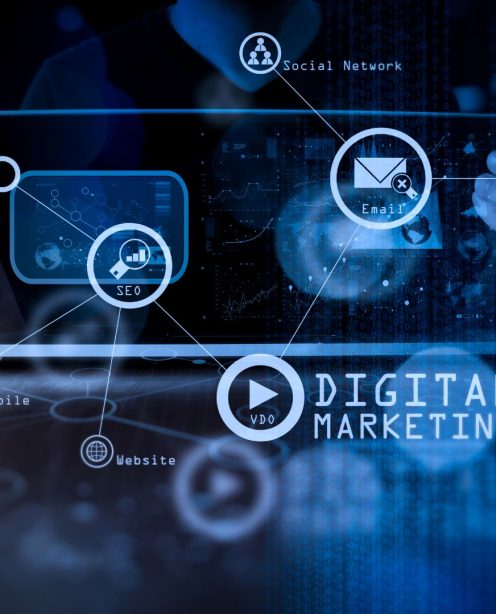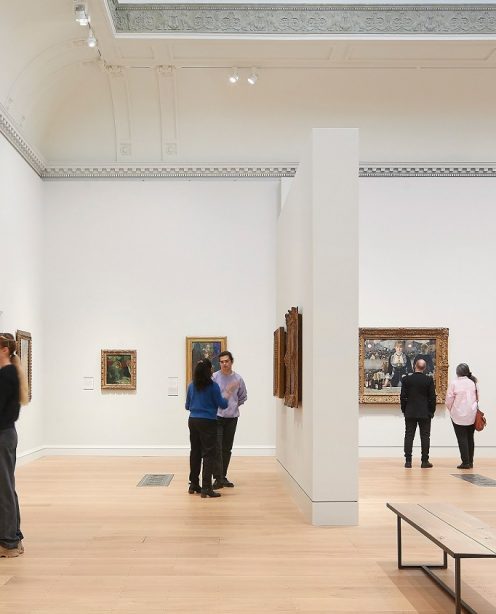Defining engagement
Arts Council England defines engagement in a number of ways: ‘Active’ participation (e.g a workshop), attendance as an audience member, as a reader or via participation in research. The value of ‘real’ i.e. in-person engagement is well-accepted but as people spend more and more time online, is it time to look more closely at the value of digital engagement within the arts and culture? Digital offers new and exciting ways to engage with audiences and has the power to reach swathes of new people.
So should we value a digital engagement -whether that’s someone downloading a brochure or watching an Instagram story for example- as much as a foot through the door?
Possibly.
For the purposes of this piece, I’ll define ‘engagement’ broadly as an active interaction with an organisation, whether that’s buying a ticket, signing up to a newsletter, hitting ‘Like’ or someone visiting the building, attending an event etc. This piece also focuses on digital communication channels i.e. mainly email, social media and websites (not on custom built experiences or software designed to digitise an exhibition or event).
Of course all good marketers are already competent with digital and they track, report and optimise based on their learnings from this, and there’s enough articles out there waxing lyrical about the benefits digital can bring. So digital is great. We know that.
Valuing digital engagement
But how and why should we really value digital engagement?
Digital content should provide both entertainment and information for the consumer as part of the full marketing mix. Users now look to social media for entertainment in the same way they do TV (for more on this, watch Tim Armoo’s excellent keynote at this year’s AMA conference) and/or information, in that they also want to learn or find out something. Armoo posits that all social media channels now act like traditional TV channels -some are more MTV than BBC admittedly- but most meet this need in some way.
When treated in such a way, organisations stand to gain from this too. Feedback, reach and growing brand-awareness to name but a few. It's easy to characterise online consumption as passive, but the two-way nature of social media opens up far more possibilities than with traditional TV channels. When someone walks through the doors of an organisation, that is (usually) counted as a successful engagement.
The consumer has been moved to action. Result. But with digital posing the possibility to provide all sorts of insights and bounty (as well as meaningful engagement that can be tracked in a way that a visit can’t), should digital engagements and say, someone walking through the doors of an organisation, be equally valuable metrics?
Now of course I’m not saying that some likes on Facebook are preferable to a sold out show or exhibition. And yes, there’s an element of apples vs. oranges at play here. The two values are not mutually exclusive. Social and digital channels play a huge part in getting someone to put their foot through the door in the first place, so they can’t be measured against each other. But an individual’s experience within your organisation doesn’t end when they walk out the door and digital channels can play a huge part in prolonging and deepening that engagement, so digital channels shouldn’t just be seen as a means to an end, as they so often are.
With budgets being stretched thinner and staff feeling the pressure, there’s sometimes a weary resignation amongst marketers of not knowing where to start or feeling like everything is an uphill battle. As the digital sector continues to grow apace it’s hard to keep up and know exactly where you should be focusing your efforts. Often the problem isn’t needing to convince stakeholders why digital is a good idea (many organisations are tripping over themselves to embrace digital channels so as to be seen to not be falling behind or because they just ‘know they should’) but outside of a strategy for these channels, pushing out content on these is just filling a vacuum.
Driven by organisational goals
So figuring out how much you actually value digital engagements (and why) and crucially, being able to explain that to stakeholders, is really important to help focus your efforts. You wouldn’t expect your programming team to book shows or artists that didn’t fit with the goals of the organisation, so why operate without a similar framework for your digital marketing efforts?
Looking at the goals of the organisation and working backwards from this will help you to identify how digital could help you get there and this will help you get stakeholders and staff on board with the journey too, as this report from Digital Innovation Fund for the Arts in Wales points out:
Instead of ‘siloing’ digital technology, the most effective strategies for adoption seek to integrate digital internally across the organisation as a whole. Innovation may take place in a range of different organisational activities, from creation of art to audience engagement to ticketing, but it requires underpinning with good operational support – particularly finance and governance.
Digital Innovation Fund for the Arts in Wales
So staff engagement with digital is the first step in redefining digital engagement with your audiences.
Tate is already on this bandwagon and can articulate how they want their digital content to work within the wider goals and context of the organisation:
Understanding our audiences and evaluating the impact and value of their digital experiences is a vital element of Tate’s digital transformation. One of the aims is to establish a digital culture within Tate that is audience centred, responds to the audience needs and that is also iterative and evaluation led.
Tate
With clear aims for their digital activity both internally and externally, this mission statement situates digital clearly on their roadmap and elevates its status and value.
A way to get buy-in for this approach is to pose challenges (linked to goals) that rather than set vanity goals, as Artsadmin discovered when trying to communicate the benefits of a new CRM system:
… ‘we need a new CRM system’ is not terribly exciting or motivating, unless perhaps you are a CRM consultant, and maybe not even then. Perhaps more inspiring is “we need to deepen our relationships with our audiences, artists and stakeholders, and we’ve found a tool to help us do that.
Artsadmin
This clearly provides a way forward and also opens up new opportunities for ways of doing things, rather than just getting into bed with a shiny new technology straight away.
The value of digital engagement is something that will continue to evolve as will 'real' engagement as funding models, technology, attitudes etc. change and keep us on our toes and there’s no one way you can ever fully quantify the value of it, nor would you want to.
Engaging with art is about something bigger and more meaningful whether that happens on or offline. But interrogating what you value on and offline alongside others in your organisation will help to cultivate fruitful relationships with your audience at every opportunity possible and ensure a stream of footprints both on and offline for the future.




